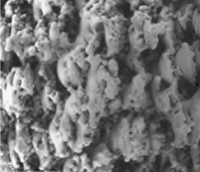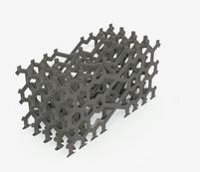 It seems like just about every day, we’re learning of new 3D printing innovations in the medical field, from prosthetics and pharmaceuticals to anatomical models, surgical guides, and implants. But none of these can get very far in the market, and into the hands of the doctors and patients who need them the most, without receiving the very important stamp of approval from the US Food and Drug Administration (FDA).
It seems like just about every day, we’re learning of new 3D printing innovations in the medical field, from prosthetics and pharmaceuticals to anatomical models, surgical guides, and implants. But none of these can get very far in the market, and into the hands of the doctors and patients who need them the most, without receiving the very important stamp of approval from the US Food and Drug Administration (FDA).
The agency has to take many factors into account when deciding if a product or device is safe to use – it’s not an easy job, and the FDA often asks for feedback and publishes guidance regarding 3D printing. Still, not everything gets that necessary approval to move forward, so when companies do receive clearance, it’s a big deal.
 Early stage orthopaedic company Additive Orthopaedics, LLC is on a mission to integrate biologics (biopharmaceuticals) and advanced manufacturing, in order to ensure a better outcome for the patient. The company is a leader in the 3D printed orthopaedic foot and ankle device market, and received FDA clearance for its first product, a 3D printed titanium digital fusion implant, in the summer of 2016. A month later, the FDA granted Additive Orthopaedics clearance for its 3D printed hammertoe implants, and soon after for its 3D printed osteotomy wedge system, which address bone fractures and osteotomies in the ankle and foot.
Early stage orthopaedic company Additive Orthopaedics, LLC is on a mission to integrate biologics (biopharmaceuticals) and advanced manufacturing, in order to ensure a better outcome for the patient. The company is a leader in the 3D printed orthopaedic foot and ankle device market, and received FDA clearance for its first product, a 3D printed titanium digital fusion implant, in the summer of 2016. A month later, the FDA granted Additive Orthopaedics clearance for its 3D printed hammertoe implants, and soon after for its 3D printed osteotomy wedge system, which address bone fractures and osteotomies in the ankle and foot.
By June of 2017, the young company, which only launched its first commercial product line a year ago, received 510(k) clearance from the FDA for a fourth 3D printed device – the intermedullary, minimally invasive Bunion Correction System, which includes a 3D printed implant meant to align and stabilize bunions.
In its short history, Additive Orthopaedics has seen over 1,000 of its devices implanted, and has also developed and patented multiple design structures, which are only possible thanks to 3D printing, that are used in its current and future products. These include its AddBone implant surface technology, Biologic Interface, and its Variable Honeycomb Lattice (VHL) design, which is optimized to allow enhanced bony in-growth throughout the implant structure while remaining strong.
- AddBone
- VHL
- Bone Growth
Now, Additive Orthopaedics is sharing more good news – it has received FDA 510(k) clearance for its Patient Specific 3D Printed Bone Segments for the global extremities market.
“This is a tremendous milestone for orthopaedics and the obvious trend towards patient specific 3D printed implants,” said Greg Kowalczyk, the President of Additive Orthopaedics. “In cases of implant revision, limb salvage, and trauma, often there are no clinically available devices to address the patient’s condition. This is where 3D printed patient specific implants are making significant clinical impacts.”
 The company’s Patient Specific 3D Printed Bone Segments were developed to address internal bone fixation in the feet and ankles, which requires surgery to internally set and stabilize fractured bones.
The company’s Patient Specific 3D Printed Bone Segments were developed to address internal bone fixation in the feet and ankles, which requires surgery to internally set and stabilize fractured bones.
“Our lattice structures are proving to be the next generation design as opposed to the older, more open, types of structures that rely on biologics for osteosynthesis,” explained Brian McLaughlin, the Vice President of Engineering and Operations at Additive Orthopaedics. “In several patients, our lattice structures have shown close to 90% boney in-growth after 6 months using no biologics. We are excited to now offer these as patient specific solutions.”
In other company news, Additive Orthopaedics also closed a $1 million Series B round of financing recently.
Discuss this story and other 3D printing topics at 3DPrintBoard.com or share your thoughts in the Facebook comments below.
[Images: Additive Orthopaedics]
Subscribe to Our Email Newsletter
Stay up-to-date on all the latest news from the 3D printing industry and receive information and offers from third party vendors.
Print Services
Upload your 3D Models and get them printed quickly and efficiently.
You May Also Like
3D Printing News Briefs, July 2, 2025: Copper Alloys, Defense Manufacturing, & More
We’re starting off with metals in today’s 3D Printing News Briefs, as Farsoon has unveiled a large-scale AM solution for copper alloys, and Meltio used its wire-laser metal solution to...
3DPOD 260: John Hart on VulcanForms, MIT, Desktop Metal and More
John Hart is a Professor at MIT; he´s also the director of the Laboratory for Manufacturing and Productivity as well as the director of the Center for Advanced Production Technologies....
3D Printing News Briefs, June 28, 2025: Defense Accelerator, Surgical Models, & More
In this weekend’s 3D Printing News Briefs, 3YOURMIND was selected to join an EU Defense Accelerator, and PTC has announced model-based definition (MBD) capabilities within Onshape. Finally, a study out...
EOS in India: AM’s Rising Star
EOS is doubling down on India. With a growing base of aerospace startups, new government policies, and a massive engineering workforce, India is quickly becoming one of the most important...




































